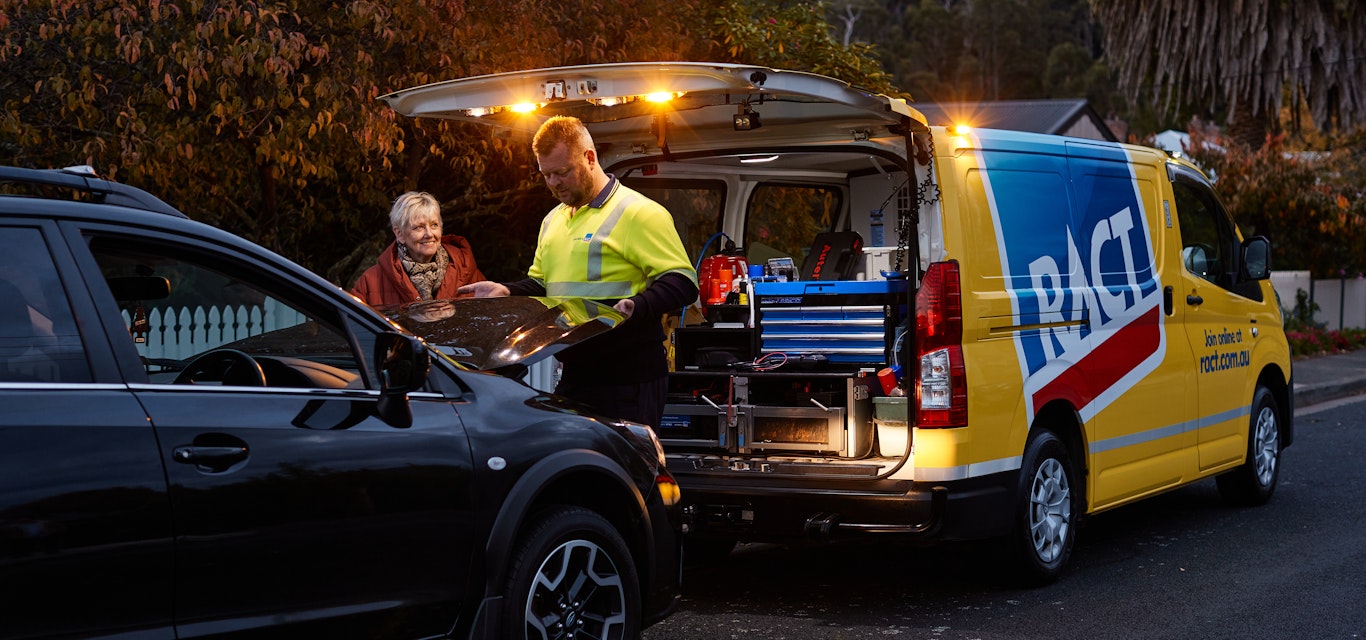Slow down for yellow too
From 1 August, the road rule requiring motorists to slow down when passing emergency service vehicles will be extended to include our roadside assistance workers.
Think it would be scary to be working while cars fly past you at more than 90km/h? This is a reality for our roadside patrols every day.
Just like our emergency service workers, our roadside team doesn't know where their next job will be. Our members can't choose where they break down so the team can be called to dangerous locations multiple times a day, often with no protection other than their flashing lights.
From 1 August, the legislation requiring motorists to slow down when passing emergency service vehicles with flashing lights or sirens will be extended to include roadside assistance vehicles.
This means you'll need to slow down to 40km/h or less when passing slow-moving or stationary:
emergency response vehicles (such as police, fire or ambulance with red and blue flashing lights)
heavy vehicle safety cars (with magenta flashing lights) that are stopped on the side of the road
other incident response vehicles (with yellow flashing lights) such as RACT Roadside Assist vans and tow trucks
On roads with a speed limit of 80km/h or less, this rule will apply without exception. On roads over 80km/h, you will need to slow to 40km/h unless it's not safe to do so. If it isn’t safe to slow to 40km/h, you must slow down as safely as you can.
We’re hoping this will make roadside assistance workers safer, and keep those people we help on the roadside safe as well.
This is a good thing for everyone, making breaking down by the side of the road much safer.
Learn more in this episode of Road Torque.
We asked our patrols to comment on what this will mean to them and their safety.
Working on the side of the road in a high-speed environment with no traffic management is extremely stressful. It makes it very difficult to give our full attention to the member and their breakdown.
Whilst there will always be a risk of someone ignoring the rule or driving distracted, having motorists recognise your worksite and slow down will give us some breathing room to undertake our duties, thus reducing stress. Should an incident ever happen, a lower passing speed will greatly increase both our and the member's chances of escaping injury.
On more than one occasion we've had our wing mirrors struck by passing cars and trucks. In one instance a patrol was clipped on the hip by a car passing too closely. Whilst we've been relatively lucky in this area the same can’t be said of our sister clubs as there have previously been emergency roadside assistance workers struck and killed at their worksite.
Our inclusion in this rule will go a long way to keeping everyone safe at the side of the road, so we can all return to our loved ones at the end of each shift.
What we need now is the general motoring public to adopt this rule to keep us safe while we perform our duties and keep those broken down safe as well. On average it would add about 20 seconds to your trip but could mean a lifetime for one of us.
